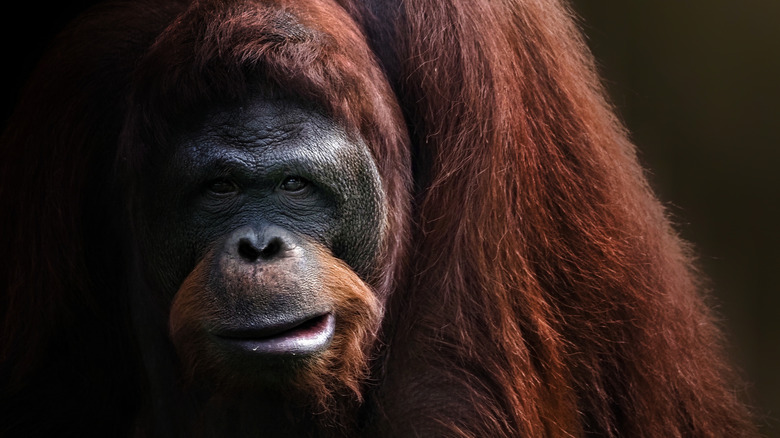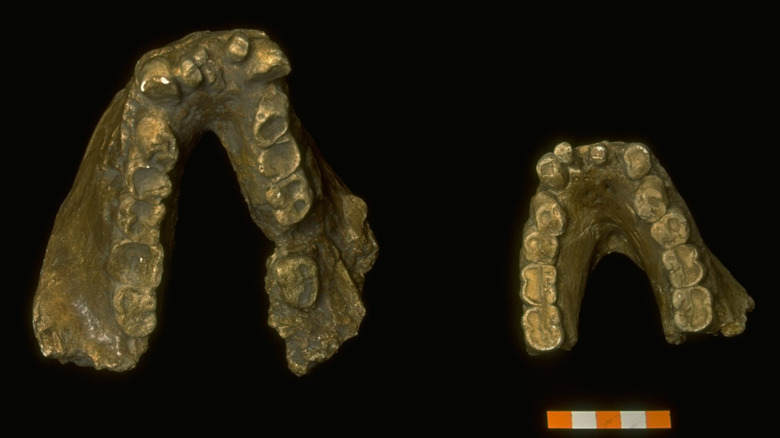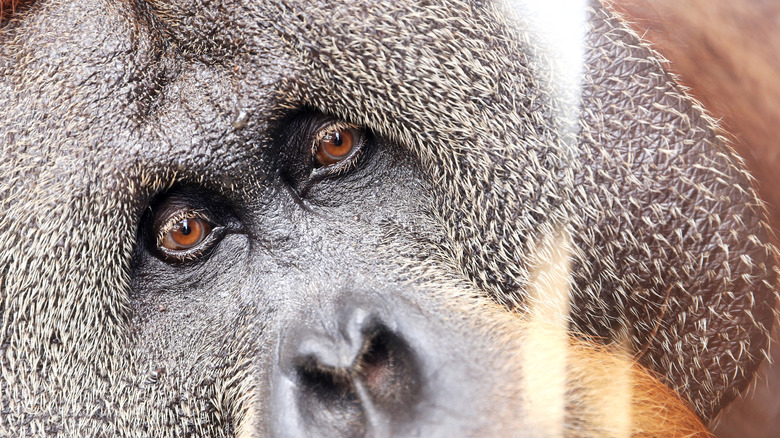Why The World's Biggest Ape Went Extinct
We human beings belong to a very exclusive group of animals. There are only four types of "great apes" in existence today, those being humans, chimpanzees, orangutans, and gorillas. As the name "great ape" implies, all members of our group are big by primate standards, and gorillas, namely the eastern lowland gorilla species, are the largest primate subspecies in the world. However, all of us great apes living today pale in comparison to the ancient ape known as Gigantopithecus blacki, which, as far as we know, was the largest primate species to ever walk the Earth.
It was back in 1935, two years after the original "King Kong" movie debuted, that an anthropologist named Gustav von Koenigswald stepped into an apothecary in Hong Kong and discovered a collection of massive teeth. They were being sold as "dragon teeth," meant to be ground up for use in traditional medicine, but they didn't look like the teeth of a mythical lizard. They looked like giant human molars.
Between 1935 and 1939, von Koenigswald discovered more of the same giant teeth at apothecaries in both Hong Kong and China. Some conspiracists suggested that they could be remnants of extinct giant humans, but when a few fragments of jawbone were uncovered, they revealed an ancient ape most similar to modern orangutans. Named Gigantopithecus, meaning "giant ape," it has become one of the most famous extinct primates of all, but we still know very little about how it lived, and what happened to it.
How Gigantopithecus compared to other apes
Today, more than 2,000 Gigantopithecus teeth have been discovered, primarily in southern China, as well as in parts of Vietnam and India. A few fragments of jawbones have also been found, but no complete skull, nor any part of a skeleton below the head, has been found to date. Due to the limited selection of evidence, most of the details about Gigantopithecus and how it lived remain a mystery to scientists. However, the teeth give a strong indication of how big these beasts were.
Based on the scale of the teeth, scientists estimate that Gigantopithecus stood around 10 feet tall, and likely weighed between 440 and 660 pounds. These proportions would make it the largest known primate on average. For comparison, the largest living primate species on average is the eastern lowland gorilla, whose largest members can reach five and a half feet in height and weigh up to 485 pounds.
Gigantopithecus lived during the Pleistocene epoch, a time in which Earth was populated by several forms of megafauna, including North America's famed woolly mammoth and Australia's legendary giant kangaroo. Gigantopithecus as a species probably arose sometime around 2 million years ago and died out in the midst of the Pleistocene, between 200,000 and 300,000 years ago. Until very recently, scientists could only speculate about how it met its fate, but a fresh study has provided the first concrete clues as to its demise.
Gigantopithecus couldn't adapt to a changing climate
Scientists have long hypothesized that Gigantopithecus died out for the same reason that most of the other Pleistocene megafauna did: climate change. The Pleistocene was characterized by periods of sudden and extreme changes in the environment, including the last ice age. It would figure that Gigantopithecus, like other large mammals of the time, couldn't survive these changes, but there was one particular detail that had scientists especially perplexed.
Gigantopithecus lived alongside an ancient orangutan species called Pongo weidenreichi. While P. weidenreichi is now extinct, some of its fossils have been dated to the Holocene, the current geological epoch, indicating that it survived many millennia beyond Gigantopithecus despite living in the same region. Furthermore, P. weidenreichi shared a common ancestor with Gigantopithecus, their genera diverging some 10 to 12 million years ago. Why did one survive while the other could not?
A study published in the journal Nature in 2024 finally provided an answer to that question. Researchers analyzed the teeth of both Gigantopithecus and P. weidenreichi, and found that, as the native environment of these species changed, one adapted while the other did not. As lush forests transformed into grasslands, P. weidenrechi changed its diet, but Gigantopithecus continued to rely on the fruits, leaves, and flowers of trees. The massive ape was too specialized to change in time with the climate, and as trees grew scarcer, finding enough fuel for those massive bodies ultimately became impossible.


